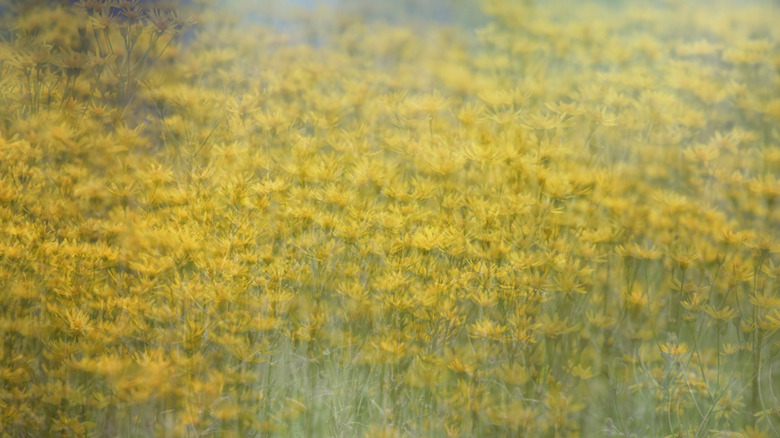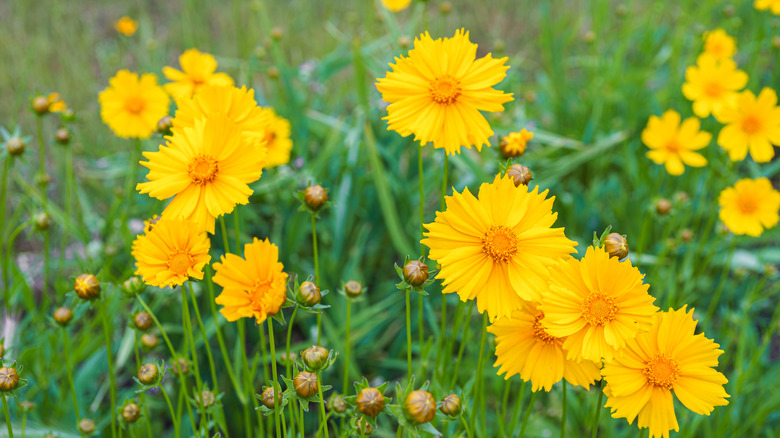One Of The Lesser-Known Garden Plants Thats Flowers Bloom Year Round
Stop the presses; we may have found the perfect flower. Raise your hand if you'd like a colorful low-maintenance perennial that will thrive in your poor and rocky soil. How about a flowering plant that is deer-resistant, rabbit-resistant, and fire-resistant? Do you seek a cheery long-blooming flower that'll encourage more birds to visit your yard, along with other pollinators? Would you appreciate a North American native plant that is tolerant of drought, heat, and humidity? Could you use a plant that has minimal pest and disease issues? One that often self-seeds and will grow new blooms when deadheaded.
If this plant sounds good to you, meet the 25 species in the Coreopsis genus, such as Coreopsis pubescens, also known as tickseed. Don't worry; tickseed has nothing to do with ticks other than seeds said to resemble the blood-sucking insects. The daisy-like flowers of most Coreopsis species are yellow; Coreopsis rosea is pink, and cultivars are being developed in more colors. In many areas, Coreopsis grows as a wildflower.
Plant coreopis for long-lasting blooms
Coreopsis is an easy to propagate perennial for beginner gardeners. It is hardy in USDA hardiness zones 5a, 5b, 6a, 6b, 7a, 7b, 8a, 8b, 9a, and 9b. Plant in the spring in well-drained soil with medium moisture. Coreopsis prefers full sun, and plants will typically grow 2 to 4 feet tall. Ensure the longest possible blooming time by deadheading in the summer.
Coreopsis can be divided in the fall and cut back after flowering if foliage gets unruly. You can easily save seeds from seed heads or leave them for birds to consume. In addition to propagating by division, Coreopsis can also be propagated by seed and cuttings. The plant is among the self-seeding flowers to plant for continuous color in your garden year after year. Blooms start in late spring and continue into late summer.
While this plant is nearly perfect, there are a few common tickseed issues you should know about before growing, such as its tendency to develop crown rot if the soil is too wet. Still, it's hard to beat this cheerful flower that seems so eager to please.

